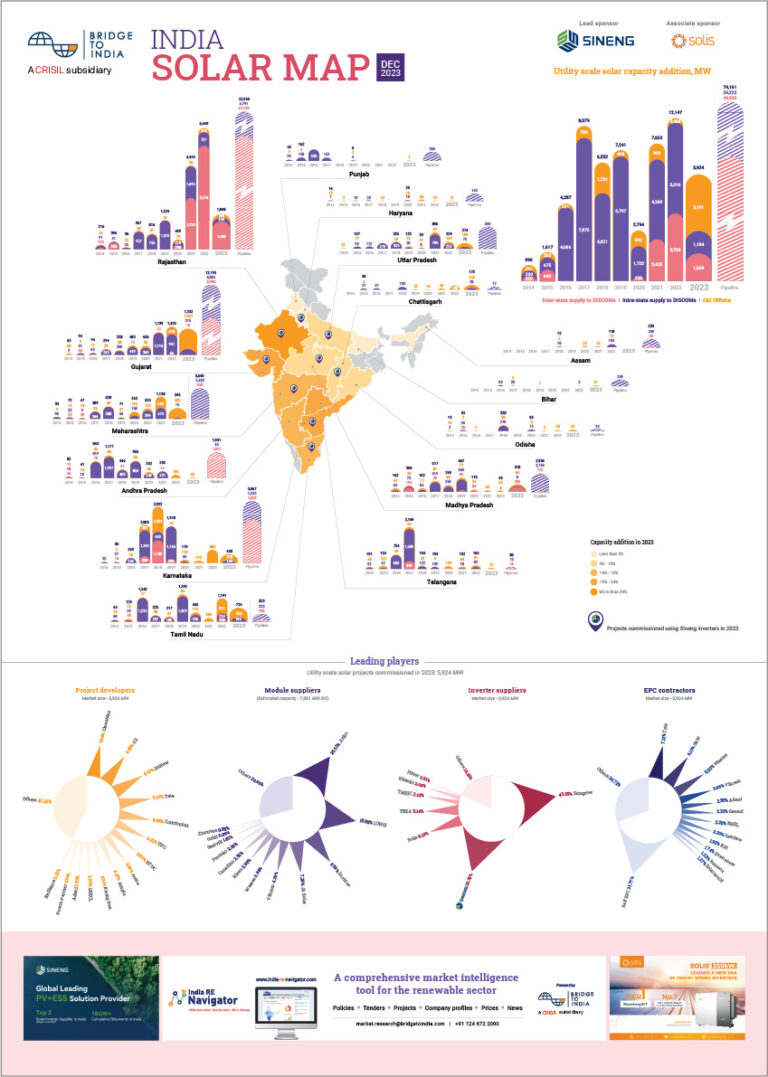News reports suggest that Neyveli Lignite Corporation (NLC), a 90% Government of India owned company, has abandoned its plan to set up 2 x 65 MW solar projects in Rajasthan after failing to agree to sell power to local distribution companies at the required price (refer). This is a disappointing development as these projects were in very advanced stages with land already identified and EPC work awarded to Bharat Heavy Electronics Limited (BHEL) and Jakson group after a competitive bidding process.
- Private sector developers are able to out-compete their public sector counterparts due to better financial engineering capability, more efficient operations and higher risk taking ability;
- Power distribution companies want cheaper power and see no benefit in buying more expensive power from public sector developers;
- Private sector is likely to continue to dominate solar project development landscape in India
Usually, public sector companies price power output by building a fixed financial return on project capital cost, which is typically discovered through a competitive bidding process. In our view, the project cancellation points to a larger trend that public sector companies, despite having a 60% share in the country’s overall power generation (primarily thermal, hydro and nuclear), are expected to find it extremely difficult to compete with private players in solar project development.
Private players’ competitive advantage lies in their better financial engineering capability, more efficient operations and higher risk taking ability. This is where the public sector companies lose out heavily. In particular, their more stringent technical specification reduces scope for cost optimization. Recent tenders have shown that EPC costs for public sector projects are typically 10-15% higher than such costs for private sector projects party because of domestic content requirement as in the case of NLC projects. Public sector companies may argue that their stringent approach results in better construction quality, but this approach is making them uncompetitive against private project developers.
Public sector companies have the benefit of lower financing cost – National Thermal Power Corporation (NTPC) recently raised USD 300 m through green masala bonds at a yield of 7.48% (refer). But their major strength, preferential access to critical mining rights, transportation infrastructure and environmental permits which helped them win major market share in thermal and hydro power segments is of little importance in solar.
We expect similar offtake problems with NTPC’s plan to develop 10,000 MW of solar capacity on its own books. The company is finding it difficult to attract offtakers when private project developers are competing aggressively and bringing tariffs down.
Going forward, we expect the private sector to continue to dominate solar project development landscape in India. Unless there is an external financing or procurement shock, the market is likely to stay extremely competitive as we have seen over the last 2 years.












